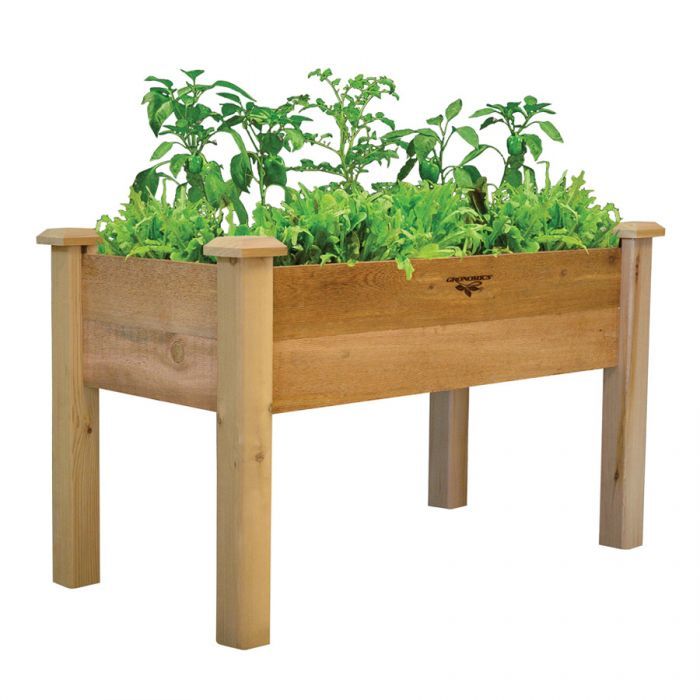Easy Raised Garden Beds on Legs

Vertical gardening is all the rage these days, and raised garden beds on legs are some of the most popular products on the market for EASY and CONVENIENT vertical gardening.
Let’s face it: Those of us “at a certain age” are tired of tending traditional garden beds down on the ground. It is nice to be able to enjoy flowers up close in a raised bed, and it is soooooo convenient to be able to grab a handful of healthy salad greens and a sprig of parsley from a waist-level container right outside of the kitchen door. Tall beds are fun for kids—maybe with the addition of a step stool – and they’re a downright necessity for older people who suffer from back pain, stiffness, and mobility issues.
Check out the following highly rated raised beds at Amazon. Many of them cost less than the price of good cedar wood (in case you were thinking of constructing your own), and they can easily be assembled in minutes.
More...
Why are tall outdoor garden beds better than traditional ones?
Elevated soil has better drainage, it doesn’t get trampled on and compacted, and it is less accessible to pests and critters. The convenient height of tall beds spares you from arduous weeding, raking, hoeing, and digging. What’s more, tall beds add architectural interest to your garden space. They’re nice looking and make great gifts for seniors, in particular.
BOTTOM LINE: These raised garden beds on legs offer better drainage, fewer pests, higher yields, better control over soil and fertilizer, and an easier, more enjoyable gardening experience.
What can I grow in a raised bed?
You can grow flowers, vegetables, herbs, or some of each. Favorites include salad ingredients such as lettuce, spinach, mini peppers, tomatoes, radishes, parsley, and basil.
Some people have been known to use these tall beds for creating miniature fairy gardens. One buyer filled the bed with a mixture of bark and moss and converted it into an indoor turtle table. Get creative!
Where should I locate my tall outdoor garden bed?
Put it in a sunny spot on your patio, deck or balcony, preferably near a water source. Keep it someplace visible so that you can appreciate its beauty. If the bed contains vegetables and herbs, you’ll certainly want to locate it near the kitchen.
A row of raised beds can be used as a “wall” to define a cozy outdoor “room.” Restaurant and cafe owners sometimes use multiple raised beds to create a barrier that separates an outdoor dining area from cars and roadways.
Some gardeners move their tall beds into a greenhouse to extend the growing season. Beds may also be stored in a shed or garage during the off-season, either disassembled or not.
What should I fill my raised beds with?
Start with a few bags of high-quality potting soil mixed with compost. Other soil amendments (manure, peat moss, kelp meal, etc.) can be added to meet the needs of your specific plants.
If you plan on filling many raised beds, multiply the height, width, and depth of the containers so that you can purchase soil by the cubic foot or cubic yard.
What do the buyers of tall outdoor garden beds look for?
Here are further tips and advice from satisfied buyers of elevated garden beds
Tall outdoor garden beds are sprouting up everywhere because they offer easy, convenient, pain-free gardening. Check out these highly rated raised beds on legs and JOIN THE RAISED BED REVOLUTION!




